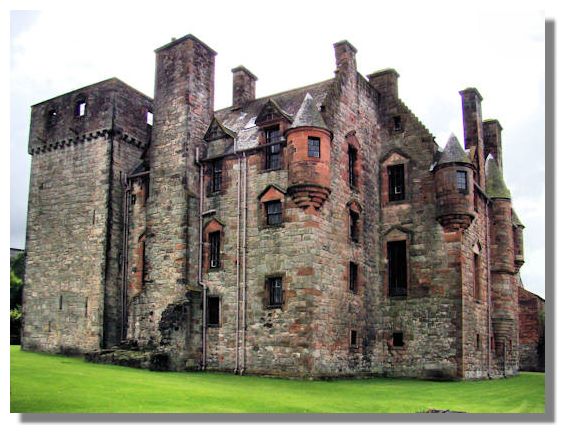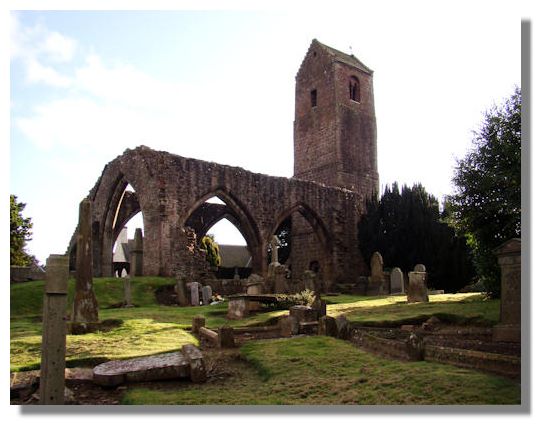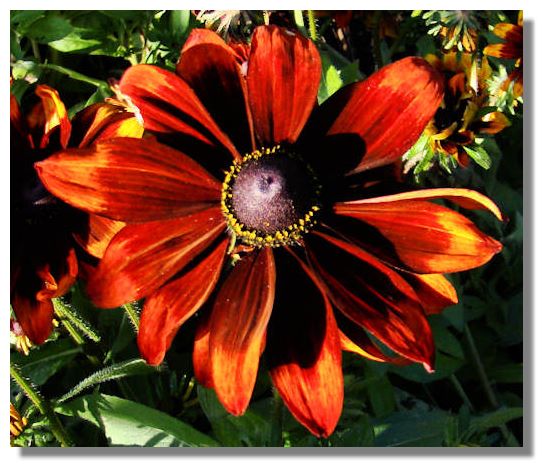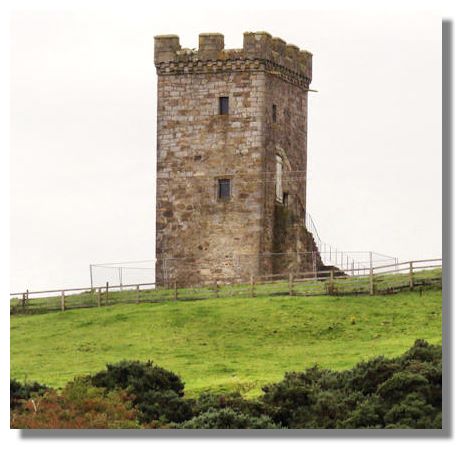The Rampant Scotland Newsletter includes a number of photographs which illustrate the weather and the seasons, plus the flora and fauna of the current week around Scotland. This separate "colour supplement" displays some more pictures, in a larger format. Here is this week's crop of Scottish views!
Newark Castle was built on the south bank of the river Clyde at Greenock, at a point where in medieval times ships had to berth because the river was too shallow to allow them to travel further up river to Glasgow. The estate on which the first castle was built passed to the Maxwells in 1402, when Elizabeth Dennistoun married Sir Robert Maxwell. It was one of their descendants, George Maxwell, who was probably the first to build a castle - a lofty tower house (largely the tower seen on the left in the picture above). Perhaps the most infamous of the castle's owners was Sir Patrick Maxwell, who became the laird in the 1580s. In an age where violence and cruelty were commonplace, he earned a reputation for ferocity against his neighbours and members of his family - while also adding a splendid Renaissance three-storey mansion to the tower house in the 1590s - the building we see today, extending from the original tower.
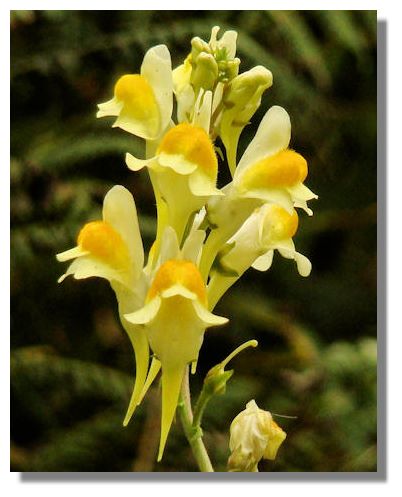
Common Toadflax is a member of the Foxglove family, but the clusters of pale yellow, snapdragon-like flowers, which are about 1" long, have long slender spurs which produce nectar. Being late flowering, it attracts bees - except sometimes the bees steal the nectar directly, by biting through the spur, thus failing to pollinate the plant!
The village of Muthill (pronounced "Mew-thill") is on the road from Auchterarder to Crieff in Perthshire. This is pretty village is a past winner in its category of the "Scotland in Bloom" competition. Muthill was an ecclesiastical site of some antiquity, even before the present church tower was built with a community of Caldee monks and the foundations of the impressive church tower are thought to be even earlier than the one we see today. This impressive, 70 feet high Romanesque tower at Muthill, and another ten miles away at Dunning, may have been built by the same masons in the third quarter of the 12th century. The square-cut shape is also reminiscent of St Rule's Tower in St Andrews. The tower (which would also be used as a safe haven in the event of attack - the windows are a later addition) was extended, at least twice, into a fine parish church, as can be seen from the large arches in this photo.
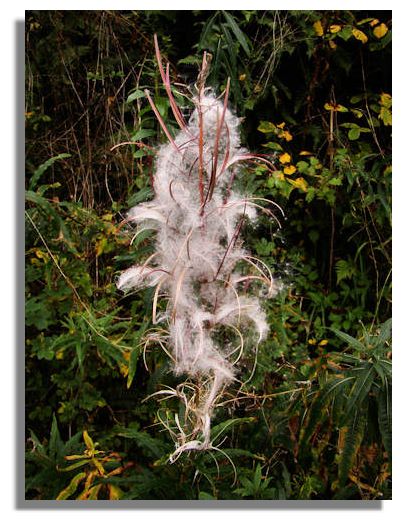
Masses of Rosebay Willowherb have been producing spectacular displays of tapering spikes of pink flowers for many months. But now all the seed pods have burst open and the silky hairy seeds are being dispersed by the wind. On a dull day, they look like some ghostly apparition coming out of the gloomy hedgerows. Rosebay Willowherb grew in abundance in bomb sites after the World War II and were sometimes called "London's Pride" as a result.
Rudbeckia are popular plants in larger gardens where their brightly coloured, daisy like flowers create a splash of colour in the late summer and early autumn. The name was given by Carolus Linneaus in honour of his teacher at Uppsala University, Professor Olof Rudbeck the Younger (1660-1740), and his father, Professor Olof Rudbeck the Elder (1630-1702), both of whom were botanists. Rudbeckia come in a variety of yellow, orange and brown. They all have a distinctive, prominent cone-shaped centre that attracts bees and butterflies. A variety of Rudbeckia with yellow flowers is often known as "Black-eyed Susan". Rudbeckia are native to North American prairies.
Caldwell Tower is all that remains of Caldwell Castle, near Uplawmoor in East Renfrewshire. Records for the Caldwell estate go back to 1294. Gilchrist More (or Mure) acquired the lands and castle of Caldwell through marriage to the heiress of Caldwell of that Ilk and the estate remained with the family until the late 17th century. When King David II was taken prisoner at the battle of Neville's Cross in 1346, Sir William Mure of Caldwell was appointed as one of the twelve nobles who negotiated the terms for his release. A later William Mure was involved in the Pentland Rising by the Covenanters, which ended in defeat at the Battle of Rullion Green in 1666. He escaped and his estates were forfeited and given to William Dalziel of the Binns near Edinburgh - Sir Tam Dalziel had led the King's victorious army at Rullion Green. The castle fell into disrepair and only the tower (partially restored) survived.If you want to look back at earlier editions of this Colour Supplement, there is an Index Page
